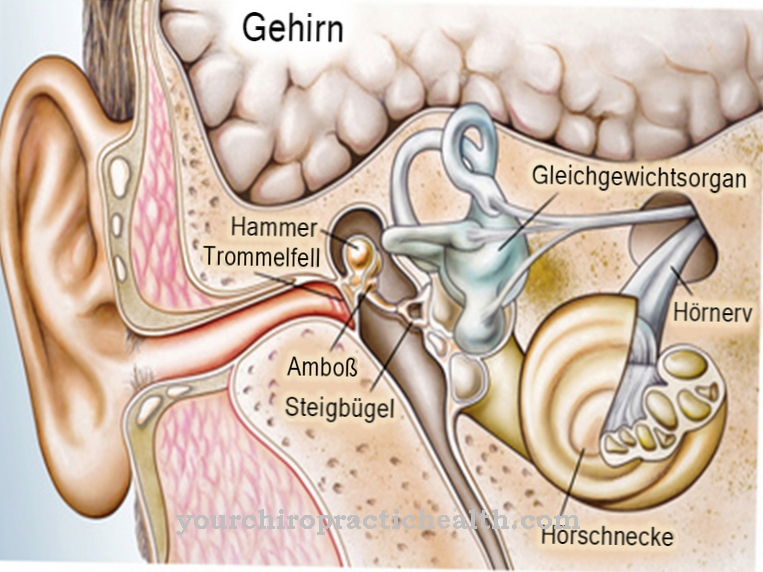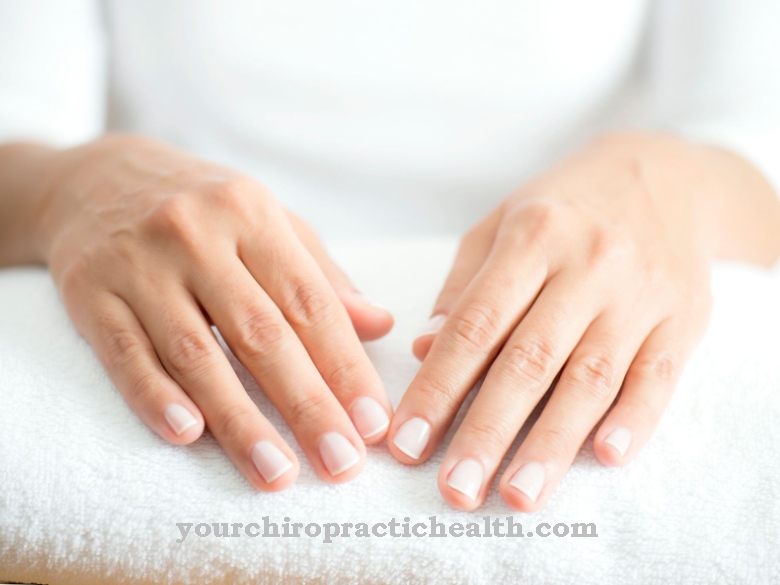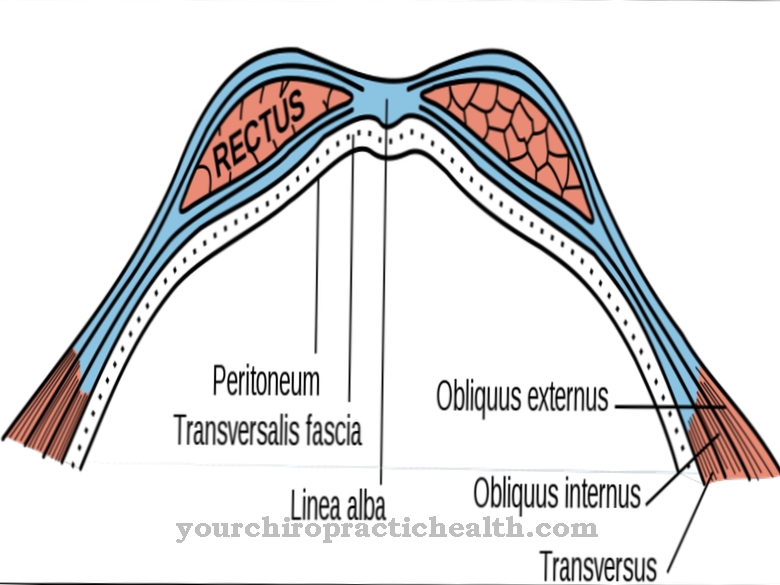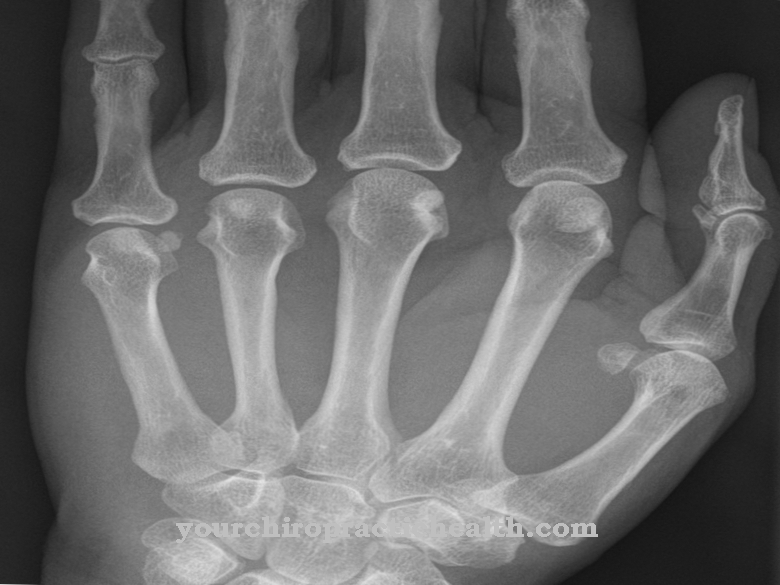The complexity of the human body is fascinating and unique. Even the smallest parts have their meaning and justification. The following will be Earlobe described in more detail with regard to structure, function and possible problems.
What is the earlobe?
The human ear consists of the inner ear, middle ear and outer ear. The inner ear includes the cochlea, the actual hearing organ, the three semicircular canals and the organ of equilibrium.
The middle ear consists of the eardrum, the three auditory ossicles, hammer, stapes and anvil, and the Eustachian cavity. The outer ear is made up of the auricle, the ear canal and the earlobe. The word "earlobe" is derived from the Latin word "lobulus auriculae".
It attaches to the auricle, but in special cases it can be completely absent or attached. This depends on the dominant or recessive inheritance. Free earlobes are inherited dominantly, while those that have grown are recessive. Similar to human fingerprints, the skin flaps are extremely individual in their expression.
Anatomy & structure
Unlike the rest of the ear, which is largely made of cartilage, the earlobe is not cartilage. It is made up of skin, a lot of fat and connective tissue. There is a fine network of capillaries in the earlobe.
Capillaries are the finest, small vessels. This means that the earlobe is extremely well supplied with blood compared to the rest of the ear. Another special feature is the low sensitivity of the earlobe to pain. These two properties mean that doctors tend to use the earlobe more often and less on the more painful fingertip when taking drops of blood. With the help of the capillary blood on the earlobe, the lactate value or blood sugar value, which is important for athletes, is often determined.
Doctors differentiate between different types of earlobes. This is how earlobe hypoplasia describes small, overgrown earlobes and earlobe hyperplasia are large skin lobes. In addition, a baby may be born with earlobe deformities. All three variants can, but do not have to be changed operationally.
Function & tasks
At the current time, the scientists are not in agreement on whether the earlobe takes on its own function on the ear. Even today, the ear is one of the least explored parts of the body. For this reason, the researchers are divided as to whether the skin flap on the outer ear really takes on the function of a resonance body. From a physical point of view, it does not have the properties that such a body should have. Furthermore, it has not yet been proven that people without earlobes hear worse than those with.
In contrast, it is considered a fact that in many people the earlobe is an erogenous zone. The types of earrings known in the western world and other cultures are also related to this - whether ear piercings, piercings or more unusual variants. The fact is that the earlobe is often used as a jewelry carrier for earrings and ear studs.
In alternative medicine, the earlobes are considered reflex zones. They can be massaged as well as acupunctured. The "Lobulus auriculae" is a point that stands for the head. If this is massaged, a person can relax, he becomes more concentrated, more alert and, according to naturopathy, the energies in the body can then flow again. Many people unconsciously massage their earlobes in stressful situations or when they are under tension.
Illnesses & ailments
As with many parts of the body, the flap of skin on the outer ear can cause problems and pain. A distinction must be made between different areas: pain caused by ear holes or piercings and pain that has a genetic cause.
Dirty ear studs and piercings are common causes of pain in the soft flap of the ear. Poor hygiene leads to inflammation. Here the jewelry should be removed immediately and cleaned thoroughly. The inflamed area can be rubbed with an anti-inflammatory ointment. It may also be that there is a general allergy to the nickel, which is often used to make ear studs. It is best to switch to nickel-free plugs to avoid inflammation and irritation.
So-called atheromas have a genetic reason for problems with the earlobe. These are benign soft tissue tumors that can form under the skin. They are also known colloquially as "groats bags". They arise from dead skin cells that remain in the vicinity of a sebum gland and slowly develop into a kind of sac.
They encapsulate dead tissue. Should such a cyst form, do not squeeze or open it. This leads to serious inflammation. An ear, nose and throat doctor should be seen who can surgically remove the atheroma completely. A new formation can only be prevented by clean removal.



























